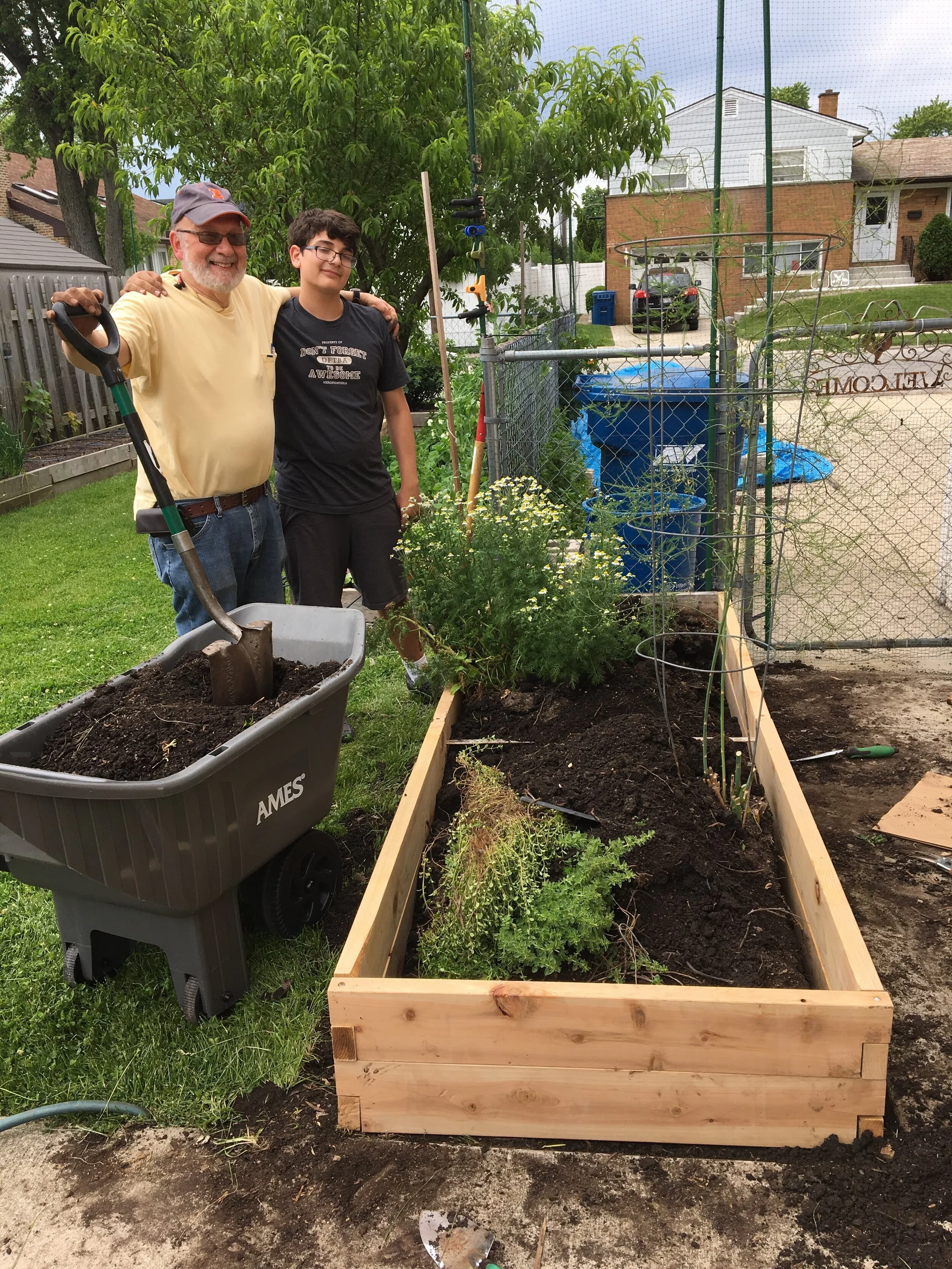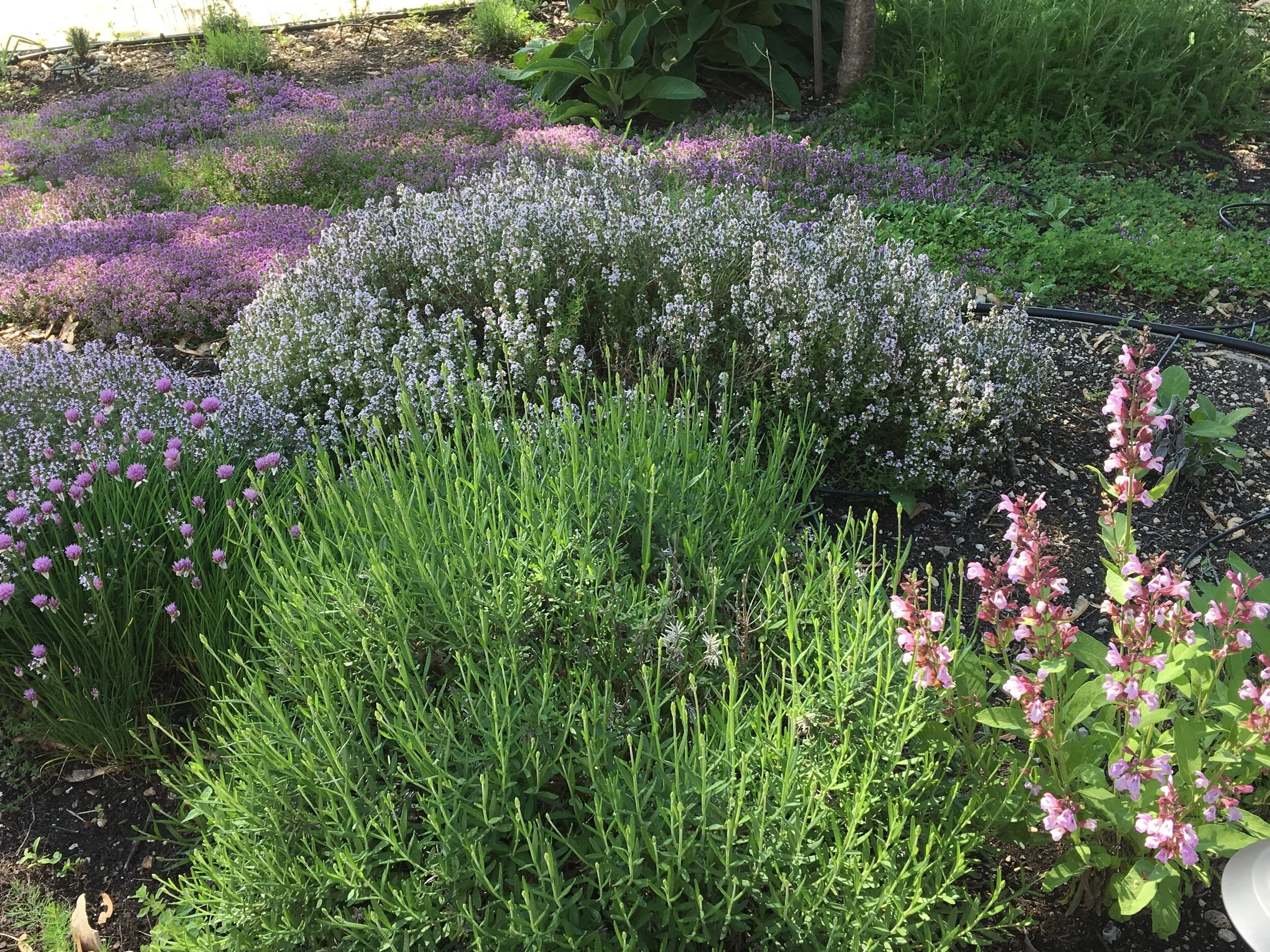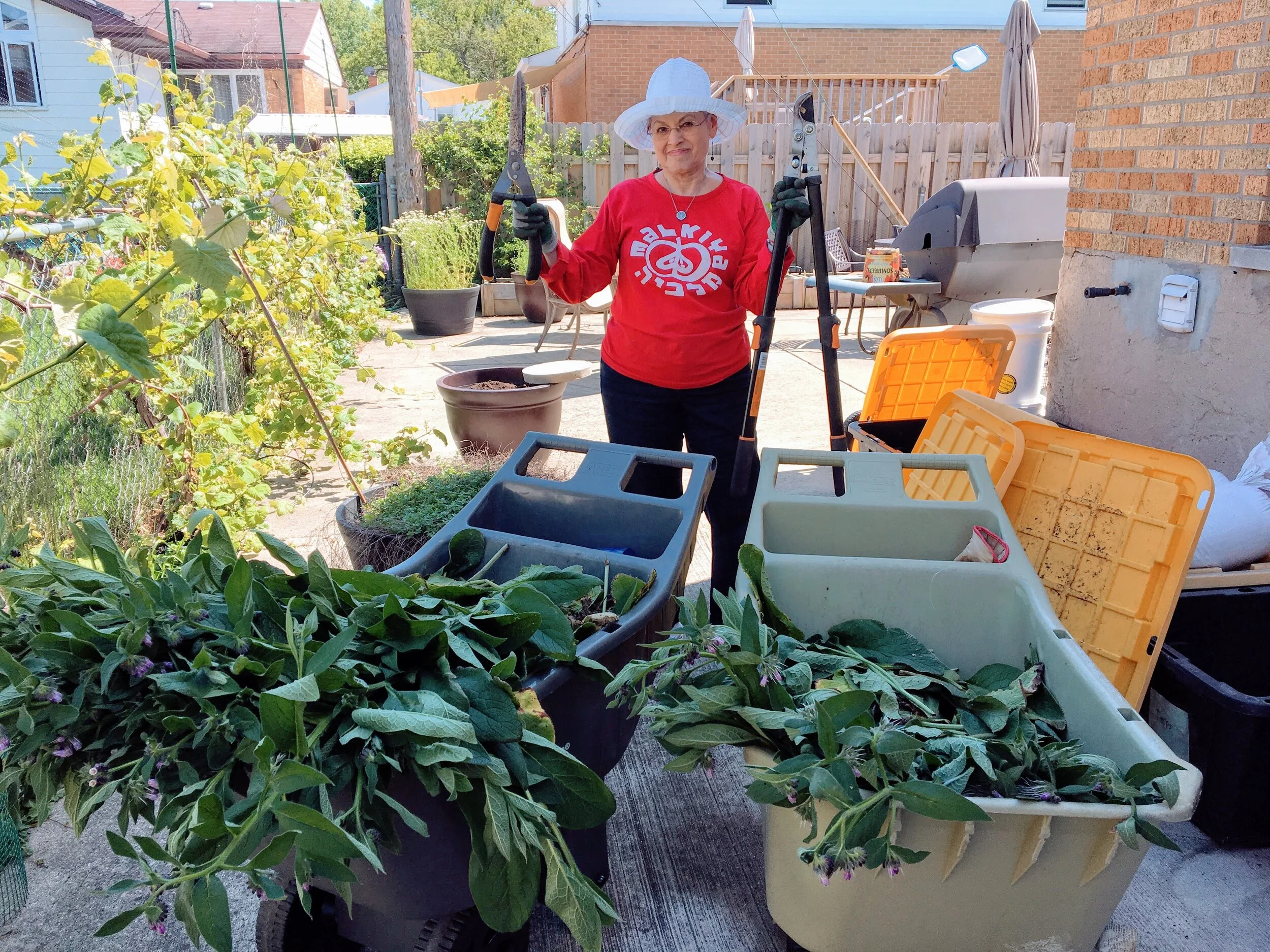Volunteers Make our Gardens Grow
This weekend, being a long one with the Memorial Day holiday, gave more time than usual to be in the garden. We held two volunteer days, and while our numbers were modest, our work was extraordinary.
One might not realize what goes into making a garden productive and functional, let alone beautiful. And we want our garden sites to be beautiful as well as fruitful. This weekend’s objectives were to: replace an 8’ x 3’ cedar raised bed that had rotted out, plant onions in our strawberry bed and compost the bed, make comfrey compost tea, harvest chamomile, plant seeds, transplant plants, weed, and compost and fertilize big chunks of the site. While we didn’t complete all our goals, we did make substantive headway.
Rebuilding the raised bed was more challenging than expected, as the bed is tongue in groove, and is reinforced down its center with steel bands. We had to disassemble it piece by piece, digging the soil away from the rotten cedar without killing the asparagus and herbs that were already growing there, then clearing the steel reinforcements of earth in order to attach the new beams. It was a dirty job, both time consuming and demanding precision, but we were up to the task and successfully completed the rebuild, adding new compost to help the plants there grow their strongest.
Tending to the strawberries was a neat trick given that we had already netted the bed to keep the rabbits from dining there. We had to work around the netting, doing our best to get in between the plants so as not to smash tender young leaves and berries — yet find space for the onions sets — and then compost the whole bed delicately. To say one or more of us tripped or got caught in the netting several times is an understatement. And yet, another win. We completed the task. That was plenty for Sunday.
Monday brought a new round of goals, the first of which was to design a schema for the raised beds. What to plant where? We referenced companion planting guides, and noted what was planted where last year, so as not to place the plants in the same spot. It’s a bit of crop rotation, ensuring that the earth does not get depleted, as each plant has specific nutritional demands it makes on the soil. Some unexpected visitors had us tour the main site with oohs and aahs, tastes of mints and chives, thyme and oregano. Then it was time to address the comfrey.
Comfrey is a lovely plant, one that is often planted around the base of trees as its medicinal qualities nourish the roots, while the trees keep it shaded. Each spring we cut the plants down to about six inches from the ground. All the stems, leaves and flowers – should there be any –are chopped to the base. The entire mass is placed in plastic tubs that are filled with water and weighted with bricks. A lid is placed atop each bin. The comfrey cooks for three weeks, making a tea that, while the smell is quite intolerable, serves as one of the most effective fertilizers I have ever seen.
Each year we dilute the tea about 50% and pour it on all the beds, and sometimes spray it on plant leaves as well. It is magical. Within one week, vines and fruits, leaves and stems simply explode. I have never seen anything like it. At the end of the season we will cut the comfrey plants down once again, this time spreading leaves and stems on the earth a round the entire site, allowing winter’s rains and snows to soak the goodness that these plants have to offer down into the soil.
Finally, it was time to plant a bit. We got to three beds. Sunflowers – three varieties – were planted along with carrots. Then broccoli, two varieties of collards, bok choy and arugula alongside beets and red onions, with sweet alyssum flowers at the edge to keep aphids away. One last bed boasts bush beans and nasturtium flowers.
The work goes on. Today we made a dent – barely – in our chamomile harvest. It has created for itself a field; in other words, it has taken on a size way beyond what we determined for it. We pick and dry the flowers, which make the loveliest chamomile tea. While we picked two trays full, but we will be working on this throughout the week, and into next. And the work continues…
We are especially grateful to those of you who have contributed to In the Gardens this season. As our spring fundraiser continues, we welcome your donations. We hope to bring on interns this season, and need your support to bring that to fruition, bringing career education and food know-how to more communities in our city.
And of course, we would love to have you spend some time with us as a volunteer!
Blessings for this holiday season and beyond,
Rabbi Robin Damsky








